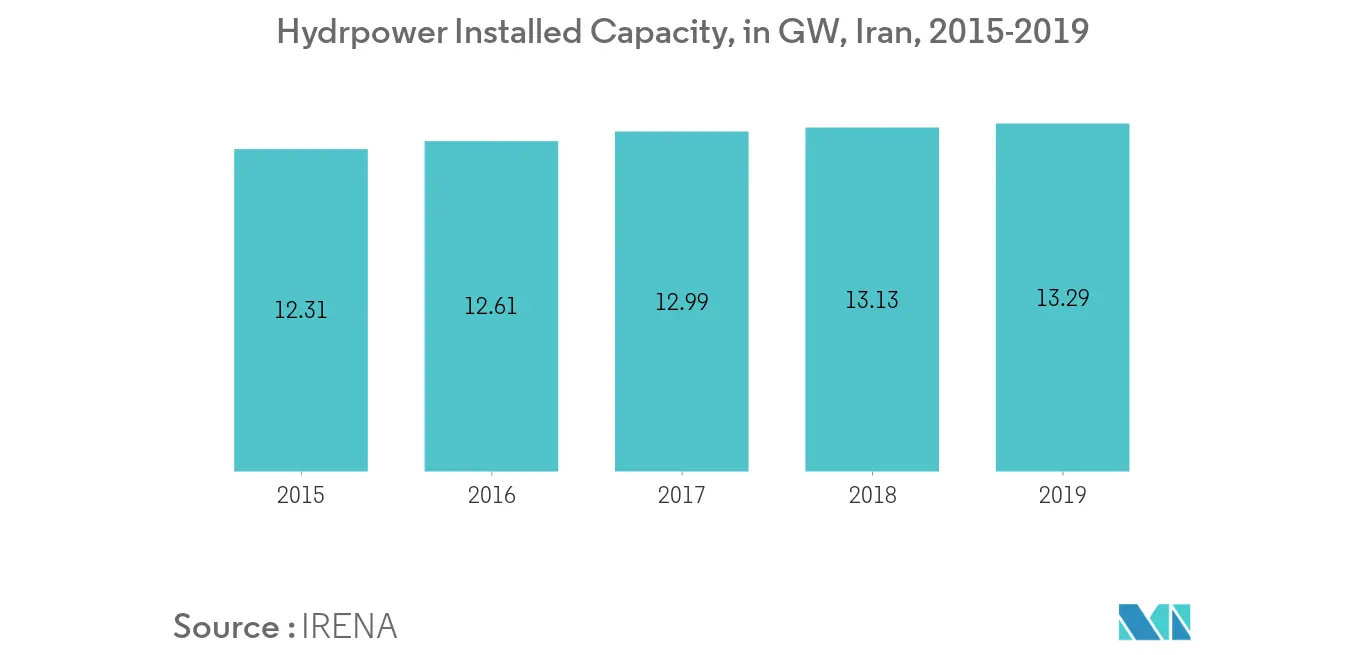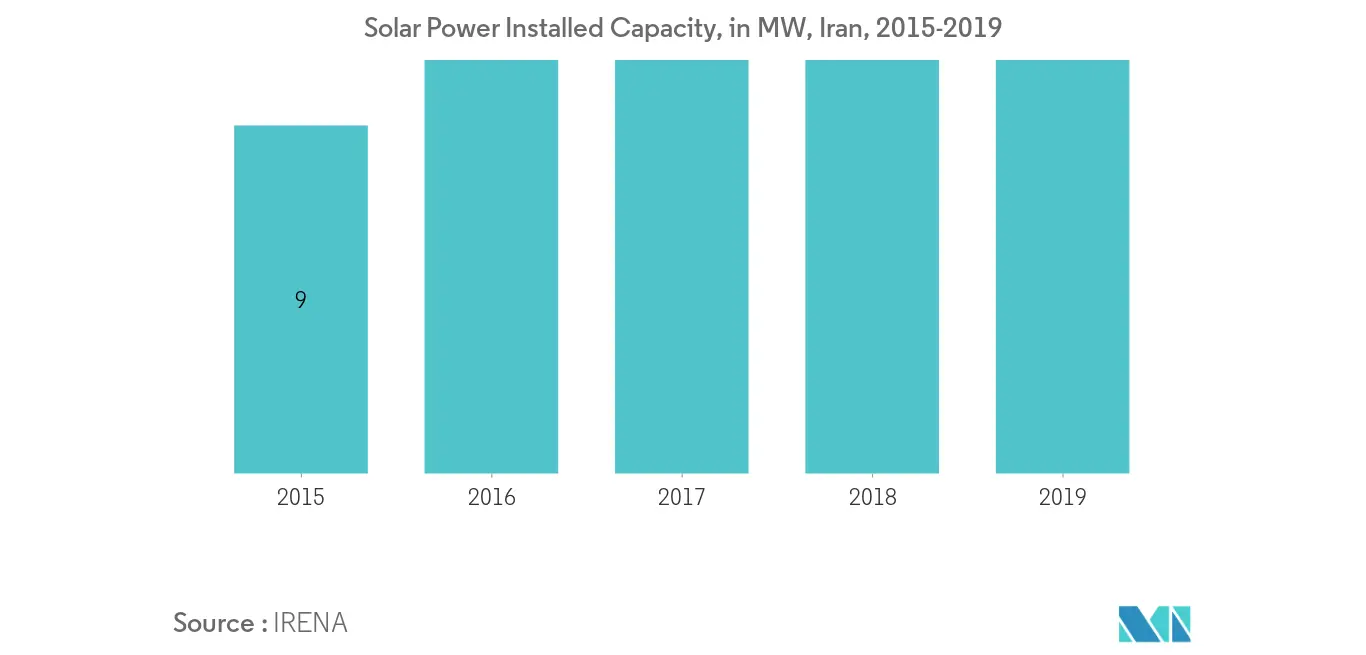Market Trends of Iran Renewable Energy Industry
This section covers the major market trends shaping the Iran Renewable Energy Market according to our research experts:
Upcoming Hydropower Projects to Drive the Market
- Hydropower is a reliable, cost-effective and sustainable natural energy source that requires the kinetic energy of the flowing water to generate electricity. It is one of the cleanest forms of energy sources, which is dominating Iran's renewable energy market. During 2019, Iran's hydropower has an approximate capacity of around 13.29 gigawatts.
- During 2019, Iran added 153 megawatts of hydropower to its renewable energy and is expected to grow further with its two under-construction hydro projects i.e. Sardasht project in West Azerbaijan province and the Bakhtiari project on the border of Lorestan and Khuzestan provinces. In the coming years, the addition of these projects is expected to increase the country's hydropower capacity to around 15 gigawatts.
- During 2018, there were nearly fourteen proposed hydropower projects in Iran, which is estimated to have more than 5.8 gigawatts capacity. Therefore, these upcoming hydropower projects are expected to boost the renewable energy market in Iran during the forecast period.

Solar Energy as a Potential Renewable Source
- Solar energy is one of the most important sources of renewable energy for Iran, due to the amount and frequency of sunshine. The country has longest sunny day, approximately two-thirds of a day is sunny, making it one of the most potential country to generate solar energy.
- During 2019, the country has a solar capacity of around 367 megawatts, which includes approximately 2000 rooftop PV systems and 85 ground-mounted PV plants. Moreover, the country is planning to increase its solar capacity to nearly 500 megawatts by 2022.
- The cost of solar panel installation varies with location, property type and the panels used and is calculated on the basis of USD per watt. During 2019, the average cost of a solar panel cost reduced to USD 2.99 per watt. Therefore, declining solar energy price is expected to boost Iran's solar PV market during the upcoming years.
- Moreover, the government in the country is taking various initiatives to promote solar energy. Feed-in-tariff (FiT) is one of the prominent initiatives that provide FiT to any solar energy generating households or businesses, based upon its capacity.


